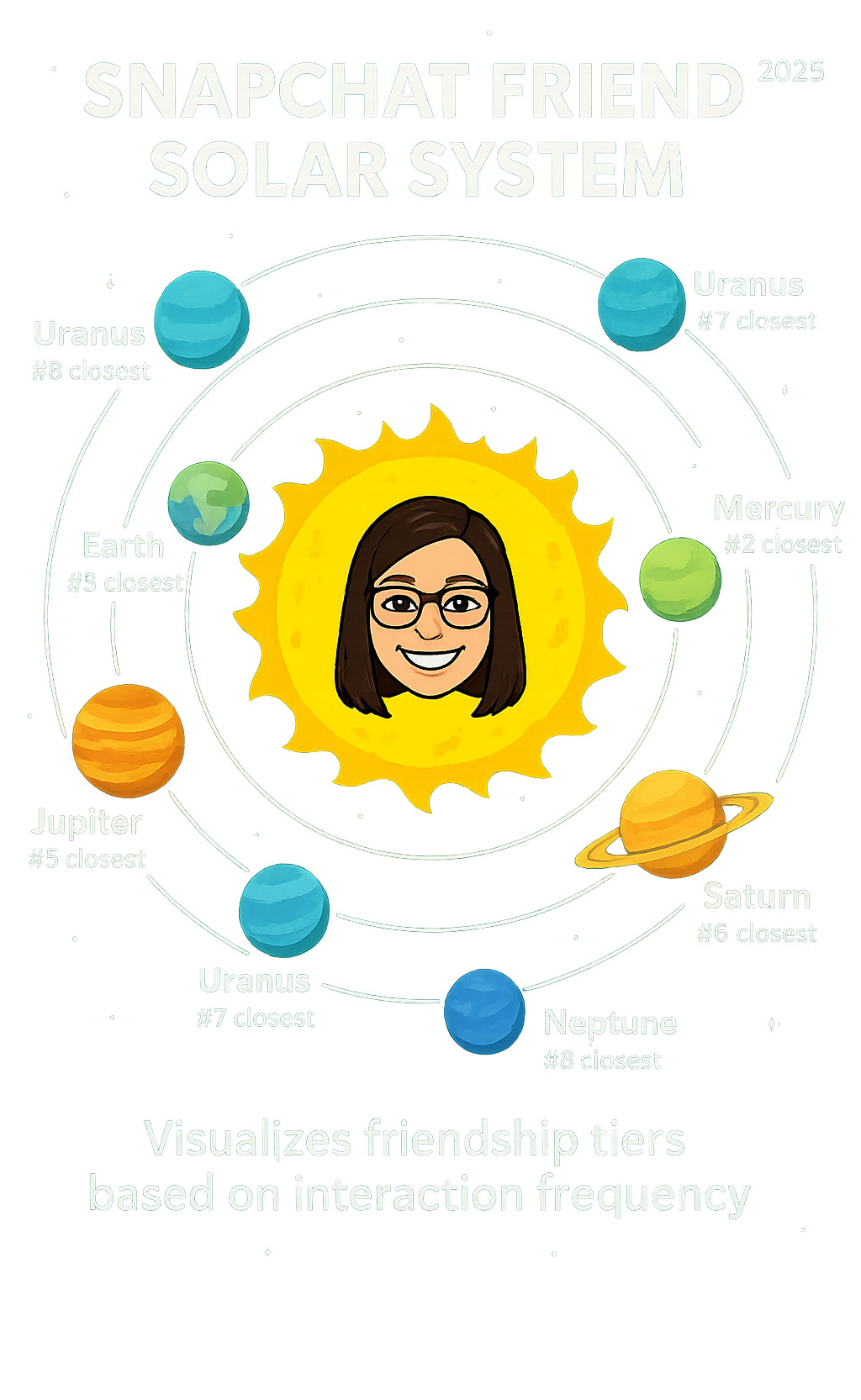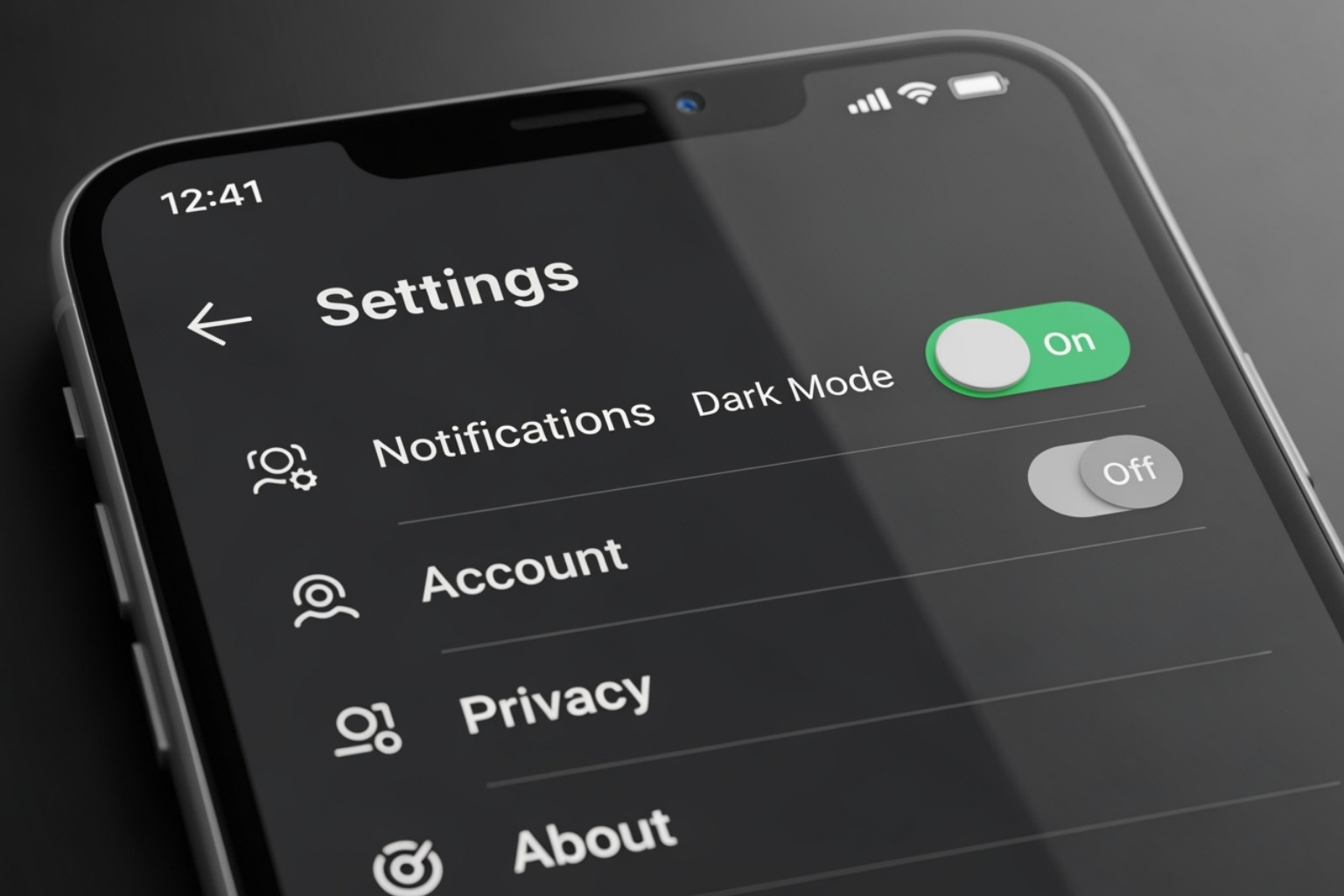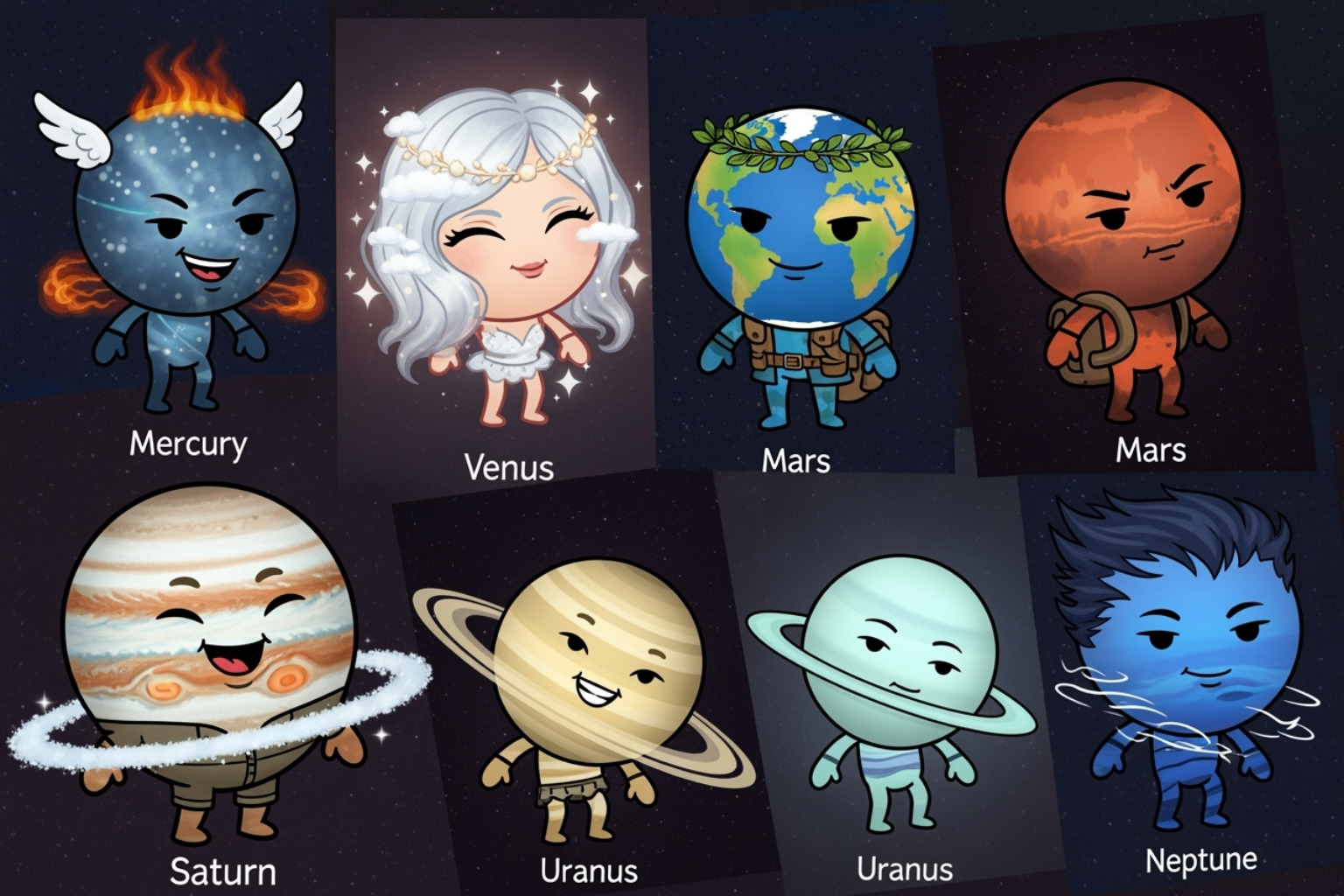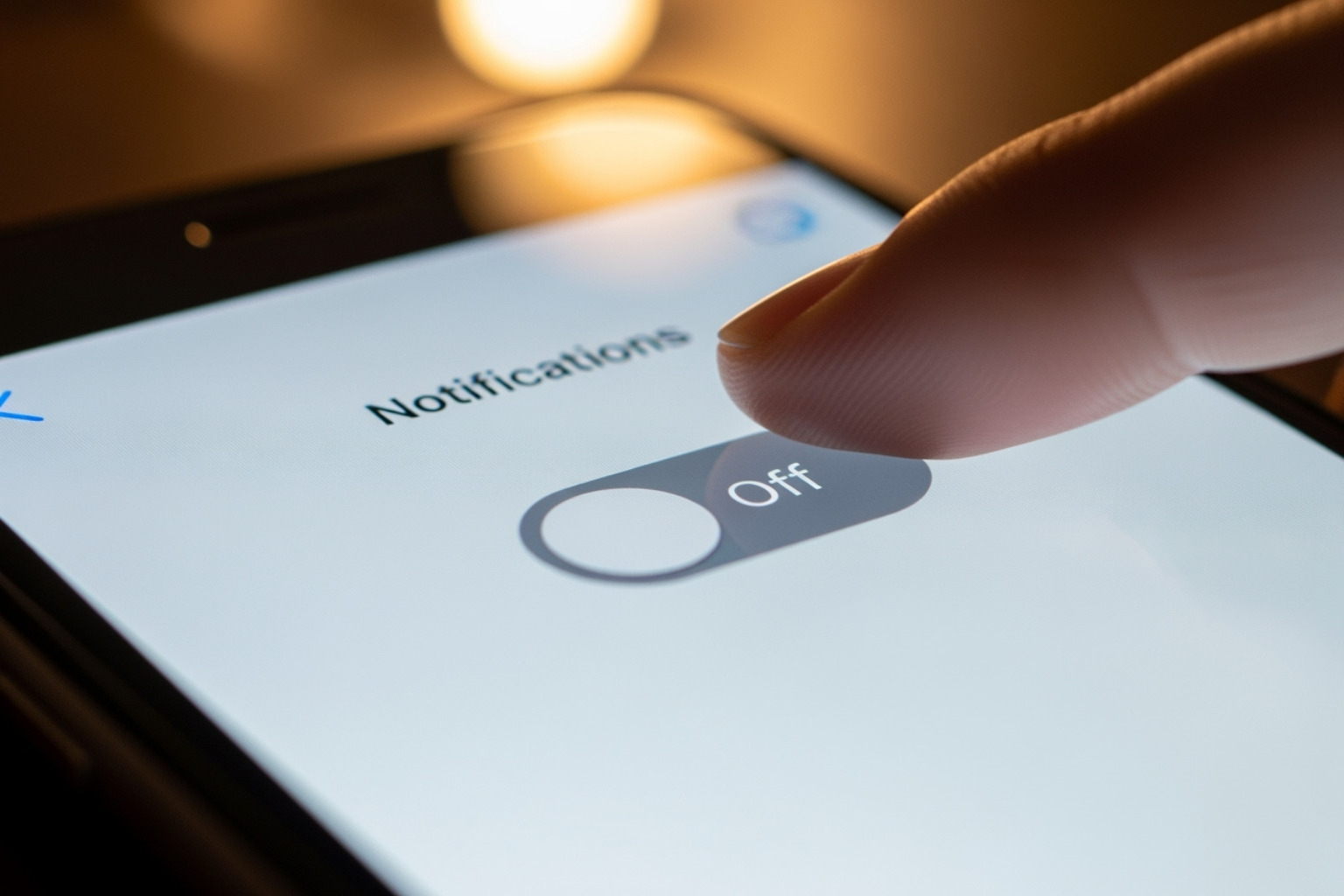Snapchat Planets: 8 Key Secrets
What Are Snapchat Planets and Why Should You Care?
Snapchat planets are a visual way to see your friendship rankings on the app – think of yourself as the sun and your eight closest friends as planets orbiting around you. This feature is part of Snapchat’s paid subscription service, Snapchat+, and it shows exactly where you rank in someone else’s friend list.
Quick Answer: Snapchat Planets Explained
- Mercury = #1 closest friend (most interaction)
- Venus = #2 closest friend
- Earth = #3 closest friend
- Mars = #4 closest friend
- Jupiter = #5 closest friend
- Saturn = #6 closest friend
- Uranus = #7 closest friend
- Neptune = #8 closest friend
The closer the planet is to the sun in real life, the closer that friend is to you on Snapchat. Simple as that.
Here’s what makes this feature interesting: it’s based on actual data from your app usage. Snapchat tracks how often you send snaps, reply to messages, and maintain streaks with each person. The algorithm then ranks your top eight friends and assigns them planets accordingly.
But there’s a catch. This feature caused some drama when it first launched in 2022. Many users, especially teens, felt stressed about their rankings and worried about where they stood with friends. Because of this feedback, Snapchat made the feature optional – it’s now turned off by default and less than 0.25% of users actually use it daily.
Whether you love it or find it awkward, understanding how Snapchat planets work can help you steer this unique social media feature.

What is the Friend Solar System and How Do You Use It?
Think of Snapchat planets as your personal friendship universe. This clever feature turns you into the Sun, with your eight closest friends orbiting around you as planets. It’s like having a cosmic map of your social circle right in your pocket.
But here’s the thing – this isn’t just a fun visual trick. The Friend Solar System actually uses real data from how you interact on Snapchat. Every snap you send, every message you reply to, and every streak you maintain gets counted by Snapchat’s algorithm. The more you chat with someone, the closer their planet gets to your Sun.
There’s one catch though: you’ll need a Snapchat+ subscription to see this feature in action. It’s not available on the regular free version of the app. Both you and your friend need to be Snapchat+ subscribers and have the feature turned on to see where you rank in each other’s solar systems.
Here’s something that trips people up at first. When you look at a friend’s profile and see their Solar System, you’re actually seeing where you rank in their top eight friends. You’re the planet orbiting their Sun. It works the other way around too – when friends look at your Solar System, they see themselves as planets orbiting around you.
The whole system updates based on your daily interactions, so your friendship rankings can shift over time. That friend who was your Mercury last month might drift out to Mars if you haven’t been chatting as much lately.
How to Enable and View the Feature
Getting started with the Friend Solar System is pretty straightforward, but you’ll need to flip a few switches first. Since this feature caused some drama when it first launched (more on that later), Snapchat made it optional and turned off by default.
To turn on the Solar System: Start by opening Snapchat and tapping your profile picture in the top-left corner. Look for the Snapchat+ section on your profile page and tap it. You’ll see a list of premium features, including one called “Friend Solar System.” Simply toggle the switch to turn it on – you can always turn it back off if you change your mind.

To see where you rank: Once the feature is enabled, head to any friend’s chat or profile page. Tap on their profile picture to open their Friendship Profile. If you’re one of their top eight friends, you’ll see a special badge underneath their name. Tap the gold-ringed badge and watch a little animation reveal which planet you are in their solar system.
It’s honestly pretty satisfying to see where you land. Are you their Mercury (their #1 best friend)? Or maybe you’re hanging out as Jupiter in their outer friend circle? Either way, it’s a fun glimpse into how your digital friendship measures up.
‘Best Friends’ vs. ‘Friends’ Badge Explained
When you’re exploring Snapchat planets, you’ll notice two different types of badges that show up on people’s profiles. Understanding the difference helps you figure out the friendship dynamic at play.
The ‘Best Friends’ badge with the gold ring is the good stuff. This means you and that person are both in each other’s top eight closest friends. It’s mutual – you’re important to them, and they’re important to you. This is your ticket to seeing your planet ranking in their Solar System.
The ‘Friends’ badge tells a slightly different story. You’re still in their top eight (which is great!), but they might not be in your top eight. Maybe they’re constantly sending you snaps and keeping up streaks, but you’re not quite as active in return. You’re still a planet in their system, but the friendship intensity isn’t quite matched on both sides.
Both badges are totally normal and nothing to worry about. Friendships naturally have different levels of interaction, and that’s perfectly fine. Just like how different technologies connect and work together in unique ways, our digital friendships have their own patterns and rhythms. Speaking of connected technologies, you might find it interesting to explore more info about connected technology trends to see how different systems interact in other areas of our digital lives.
The key thing to remember is that these badges give you a peek behind the curtain of Snapchat’s algorithm. They’re based on actual usage data, not just random assignments, so they do reflect real patterns in how you and your friends use the app together.
The Complete Order and Meaning of Snapchat Planets
Ready to decode your cosmic friendship rankings? Understanding what each planet means in the Snapchat planets system is like having a friendship decoder ring. Just like our real solar system, each planet sits in a specific spot that tells you exactly how close you are to someone – or how close they are to you.
The beauty of this system lies in its simplicity. The closer a planet orbits to the Sun in real life, the stronger that friendship bond is on Snapchat. Mercury blazes closest to the Sun as your #1 bestie, while Neptune drifts at the outer edges as your #8 friend. It’s astronomy meets social media in the most delightful way.

Each planet has its own unique Bitmoji design and represents a different friendship intensity. Mercury shows up with five red hearts, practically glowing with excitement, while Neptune might even turn its back to the Sun – a cheeky way of showing it’s the most distant ranking.
Here’s what each planet ranking means for your friendship:
| Planet | Rank | Friendship Type |
|---|---|---|
| Mercury | #1 | Your absolute closest friend; daily interaction, constant snaps/chats, strong streaks |
| Venus | #2 | A very strong connection; frequent interaction, smooth and easygoing bond |
| Earth | #3 | A reliable, consistent friend; regular interaction, a solid, comforting presence |
| Mars | #4 | An energetic, active friend; frequent, often spontaneous interactions, full of fun |
| Jupiter | #5 | A significant friend; engaged with occasionally, perhaps in group chats or shared interests |
| Saturn | #6 | A steady, dependable friend; consistent but less frequent interaction, built to last |
| Uranus | #7 | A unique, perhaps surprising friend; light but consistent interaction |
| Neptune | #8 | Your eighth closest friend; minimal but present interaction, a more distant connection |
The algorithm behind these rankings looks at everything – how many snaps you send back and forth, your chat frequency, those precious Snapstreaks, and how quickly you respond to each other. It updates daily, so your planetary positions can shift based on your recent interactions.
Mercury to Mars: Your Inner Circle
These four planets represent your Snapchat VIPs – the friends you connect with most often and most meaningfully. Think of them as your daily digital companions who keep your social solar system spinning.
Mercury is the ultimate friendship trophy. If you’re someone’s Mercury, you’re getting their first snaps of the day, maintaining those epic Snapstreaks, and probably know what they had for breakfast. The Mercury Bitmoji radiates joy with its five red hearts, just like how the Sun in our solar system keeps Mercury in a tight, warm orbit. This friendship burns bright with constant communication.
Venus represents that sweet spot of friendship – your second-closest bond that feels effortless and natural. The Venus Bitmoji swirls with light brown shades and cheerful pink, yellow, and blue hearts. These are the friends who make chatting feel like breathing – easy, natural, and essential.
Earth might be third, but don’t underestimate this ranking. Being someone’s Earth means you’re their reliable, go-to friend. The blue and green Earth Bitmoji, complete with its little moon and four red hearts, represents stability and trust. You’re the friend they count on, the one who feels like home in their digital world.
Mars brings the energy and spontaneity to your friendship cosmos. That distinctive red, crater-covered Bitmoji with three purple and light blue hearts signals a friendship full of surprises, random snaps, and probably lots of laughs. Mars friends keep things interesting with their fiery, passionate approach to staying connected.
These inner planets represent daily interactions, strong bonds, and the kind of reliable friends who make Snapchat feel personal and meaningful.
Jupiter to Neptune: Your Wider Circle
Moving beyond your inner circle, these outer planets still hold important spots in your friendship universe. While interactions might be less frequent than with your Mercury through Mars friends, these connections still matter enough to earn a planetary ranking.
Jupiter commands respect as the fifth planet. These friendships might revolve around shared interests, group conversations, or those friends whose stories you always check. The Jupiter Bitmoji showcases swirling orange shades and that famous Great Red Spot. When Jupiter friends do connect, the conversations tend to be substantial and memorable.
Saturn brings stability to your outer friendship ring. That orange Bitmoji with its iconic rings represents friendships built to last, even if they don’t require daily maintenance. Saturn friends are the ones you might not text every day, but when you do connect, it feels natural and comfortable – no awkwardness despite the time gaps.
Uranus occupies that interesting seventh spot with its unique green, circular-patterned Bitmoji. These friendships often surprise you – maybe it’s someone you recently started connecting with more, or a friend whose interaction style is different but consistent. Uranus keeps your friendship solar system interesting with unexpected moments.
Neptune rounds out your top eight as the most distant planet. Its bright blue, wave-like Bitmoji sometimes appears to turn away from the Sun, adding a touch of humor to being the “lowest” ranked. But here’s the thing – being someone’s Neptune still means you made their top eight out of potentially hundreds of friends. That’s actually pretty special.
Understanding these Snapchat planets helps you see the full picture of your digital relationships, from your closest daily connections to those valued but more casual friendships that still earn a spot in your personal solar system.
The “Why” Behind the Feature: Ranking, Privacy, and Controversy
When Snapchat first introduced Snapchat planets, the idea seemed brilliant: turn friendships into a fun game. The platform wanted to give users a visual way to see their closest connections, adding some excitement to digital relationships that often feel less personal than face-to-face interactions.
The system works through algorithmic ranking – it tracks how often you snap, chat, and maintain streaks with each friend. These rankings update daily, creating a constantly shifting picture of your social circle based on real interaction data. You can’t control or manually change these rankings; the algorithm decides everything for you.
But here’s where things got complicated. When the feature launched in 2022, it was automatically turned on for all Snapchat+ subscribers. This meant people suddenly found themselves ranked in their friends’ solar systems without choosing to participate. The results weren’t pretty.
Teens especially felt stressed about where they ranked with friends. Imagine finding you’re Neptune (the most distant planet) in your best friend’s system – that stings! The feature created social comparison and anxiety that Snapchat hadn’t fully anticipated. Major news outlets reported on the emotional impact, particularly among younger users who felt pressure about their friendship rankings.
Snapchat listened to this feedback and made a crucial change. According to Snapchat’s official explanation, the company switched the feature to opt-in only in April 2024. Now it’s turned off by default, and users must actively choose to enable it in their settings.
This shift shows how gamifying friendships can backfire when it becomes mandatory rather than optional. The feature essentially puts a number on relationships that are naturally complex and can’t be measured just by app usage.
The numbers tell the story too. Despite all the initial buzz, fewer than 0.25% of users actually engage with the feature daily. This incredibly low usage rate suggests that most people either don’t know about it, don’t want explicit friendship rankings, or simply find other Snapchat features more interesting.

Today, the Snapchat planets feature represents an interesting lesson in social media design. While the concept is creative and the execution is technically impressive, it shows that not every aspect of human relationships should be quantified – even when users have the choice to opt out.
Frequently Asked Questions
Got questions about Snapchat planets? You’re not alone! This feature tends to spark curiosity, confusion, and sometimes a bit of frustration. We’ve gathered the most common questions people ask about the Friend Solar System and answered them in detail to help you steer this cosmic corner of Snapchat.
Can I see Snapchat Planets without a subscription?
Here’s the short answer: no, you can’t. The Friend Solar System is exclusively available to Snapchat+ subscribers – it’s one of the premium perks that comes with the paid subscription. If you’re using the free version of Snapchat, you won’t see any planets, badges, or rankings, no matter how close you are with your friends.
This can be a bit disappointing if you’re curious about where you stand in someone’s friendship rankings, but Snapchat has positioned this as a premium feature to encourage subscriptions. Think of it as their way of adding extra value to the paid tier.
If you’re really interested in exploring your Snapchat planets and seeing how your friendships stack up, you’ll need to upgrade to Snapchat+. The subscription includes other features too, so you might find the overall package worth it if you’re an active Snapchat user.
Why did my Snapchat Planets disappear?
Nothing’s more confusing than having your Snapchat planets vanish into thin air! If your Friend Solar System suddenly disappeared, don’t panic – there are several logical explanations for what might have happened.
The most common culprit is subscription issues. Either your Snapchat+ subscription expired, or your friend’s did. Since both people need active subscriptions to see the Solar System, if either of you lets it lapse, the planets disappear. Check your subscription status first – it’s usually the simplest fix.
Sometimes it’s just a settings issue. The Friend Solar System is now an opt-in feature that’s turned off by default. You or your friend might have accidentally toggled it off in the Snapchat+ settings. It happens more often than you’d think, especially after app updates or when people are exploring their settings.
Here’s where it gets interesting – your friendship dynamics might have changed. The Snapchat planets system updates regularly based on your actual interactions. If you haven’t been snapping or chatting with someone as much lately, you might have dropped out of their top eight friends list. It’s not personal – it’s just algorithmic!
Occasionally, technical glitches happen too. App updates, server issues, or temporary bugs can make features disappear temporarily. If none of the above reasons apply, try restarting your app or checking for updates. Usually, everything comes back once the technical hiccup resolves itself.
Can I manually change my friends’ planets?
This is probably the most asked question about Snapchat planets, and the answer is a firm no – you can’t manually control the rankings. The entire system is automated and runs on Snapchat’s algorithm, which analyzes your actual interaction patterns with friends.
The algorithm is pretty sophisticated. It looks at how many snaps you send and receive, how often you chat, how long your streaks are, and how quickly you respond to each other. All of this data gets crunched to determine who your top eight friends are and what planets they become.
This means you can’t just decide your best friend from high school should be Mercury if you rarely snap them. The system is designed to reflect your real Snapchat behavior, not your emotional preferences or real-world relationships. It’s purely based on app activity.
If you want to change someone’s planet ranking, there’s only one way to do it: increase your interactions with them. Start sending more snaps, reply to their messages faster, and maintain streaks. Over time, the algorithm will pick up on these changes and adjust the rankings accordingly. It’s actually pretty fair when you think about it – the people you interact with most on the app get the closest planets in your digital solar system.
Conclusion
And there you have it – your complete guide to Snapchat planets! This unique feature truly is a visual friendship meter that transforms your digital connections into something more tangible and fun. Whether you’re Mercury in someone’s solar system or find yourself as Neptune, these colorful planets represent real interactions and shared moments on the app.
The Friend Solar System takes your top eight closest Snapchat connections and arranges them in a miniature cosmos around your Bitmoji. It’s clever, it’s engaging, and yes, sometimes it can stir up a bit of drama. But that’s exactly why Snapchat made it optional – you get to choose whether you want this peek behind the curtain of your digital friendships.
What makes this feature particularly interesting is that it’s entirely algorithmic, not personal. Your Mercury isn’t necessarily your best friend in real life – they’re just the person you snap with most frequently. The algorithm doesn’t know about your weekend plans or your deepest conversations. It simply tracks snaps, chats, and streaks to create these planetary rankings.
We’ve walked through everything from enabling the feature and understanding those gold-ringed badges to decoding what each planet means for your friendships. We’ve also explored why this feature sparked controversy and how Snapchat responded by making it truly optional for users.
True friendship transcends digital metrics, of course. But for those who enjoy a bit of gamification in their social apps, Snapchat planets offer a playful way to visualize your most active connections. It’s like having a friendship dashboard that updates based on your actual behavior.
At Car News 4 You, we love exploring how technology shapes our daily lives, whether it’s understanding social media features or diving into the latest digital trends. Just as we help you steer the digital universe, we’re also passionate about real-world adventures. When you’re ready to take your next journey beyond the screen, explore the latest in adventure-ready vehicles and technology and find what’s waiting for you on the open road.







